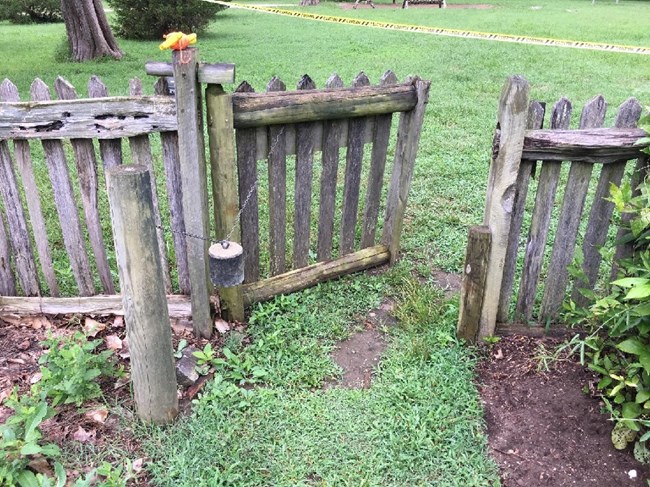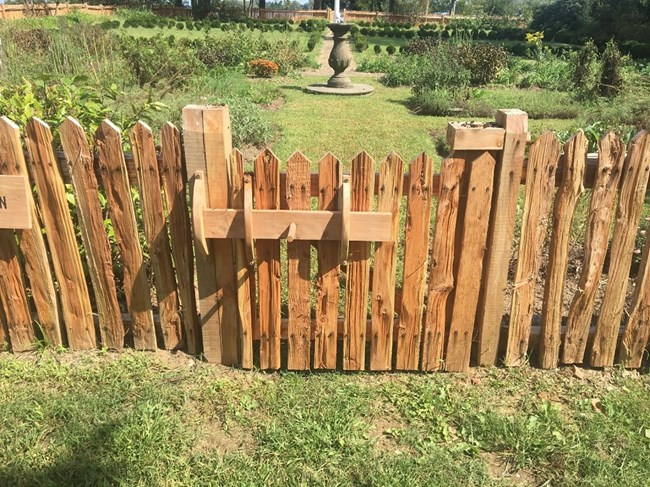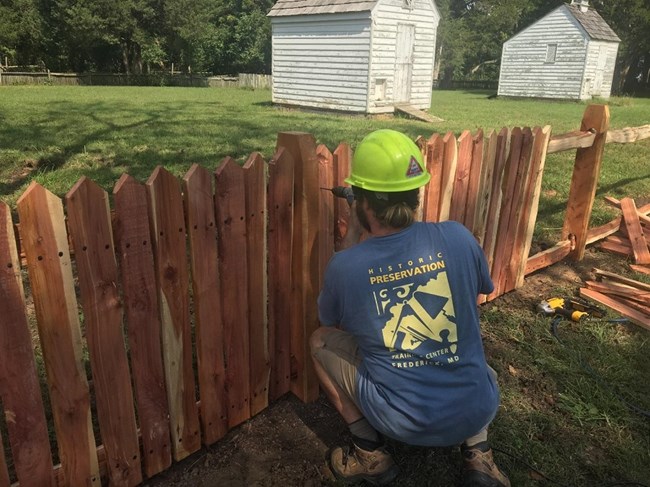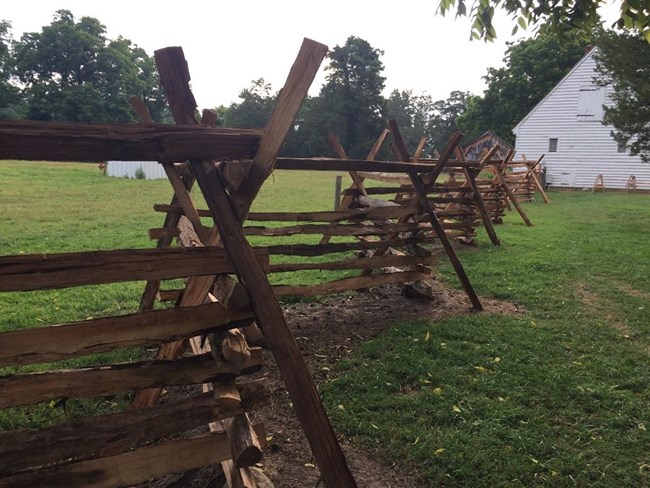
HPTC/NPS
The HPTC Carpentry Team carries out the NPS mission directly by preserving historic structures for the enjoyment of all. We strive to provide preservation construction services with the highest attention to detail, historical accuracy and longevity of repairs. We perform work in a safe and efficient manner and share our knowledge and skills with our clients, colleagues, and trainees.
Areas of Specialty
-
Timber Frame Repairs
-
Log Construction Repairs
-
Slate, Metal and Wood Shingle roofing
-
Floor, Wall, and Roof structural repairs
- Mothballing and Stabilization

HPTC/NPS
Featured Project: George Washington Birthplace National Monument, Popes Creek, VA
Project: Rehabilitate Historic Core and Colonial Garden Fence Significance of the Resource
Originally built in 1931 as part of the George Washington Birthplace Commemoration effort, the picket and worm fencing of the Colonial Garden and Historic Core Farm are important contributions to the historic scene and landscape of Washington’s birthplace. These wood fences constructed in Colonial revival style allow the visitor to encounter the landscape of what Washington’s birthplace would have looked like.

HPTC/NPS
Since initial construction both the picket and worm fencing has gone through several repair campaigns including rehabilitation in 1998 and storm damage repairs in 2003. However some repair materials and methods were incompatible with the colonial revival period. In addition, neglect and natural wood decay meant that posts and rails were rotting and portions of the fence were falling down. The garden and livestock fences have been and will continue to exhibit what has been the unique experience at George Washington’s birthplace farm.
The garden is planted and maintained by park friends group, volunteers and park maintenance personnel. The fenced livestock fields are pasture for horses, oxen, cattle and sheep.

HPTC/NPS
The garden or picket fence were made from machine split pickets and rails. The posts are sawn. All wood is native eastern red cedar material (Juniperus Virginian) and typical of the fence material used during colonial times. The picket fence is unpainted, built of notched posts, fitted rails and nailed pickets. Draw knives, axes and chisels were used to de-bark, notch and fit individual pieces. Modern power tools were used in concealed discreet areas. Wrought head cut nails hold the pickets to the rails. Because the garden site is an archeological sensitive area new posts were only placed in existing holes.
The worm fence partitions the pasture and grain lots of the core farm and is a simple fence constructed of quartered logs stacked at corners. Additional support is added by placing these stacked corners between two posts with cross strips or two lean-up rails. Sections of worm fence are usually elevated with bricks or stones beneath the corners. The logs were machine split using some axe work to run the grain of the wood. Black locust (Robinia pseudoacacia) was used for the rails, eastern red cedar for posts.
The fence is of simple construction methods; laying one course of rail after the other. Most of the fences here are seven courses tall. The top rail or jump rail (named to prevent livestock from jumping over) is used to lock in the cross tied rails where rail sections overlap.
Last updated: October 10, 2018
